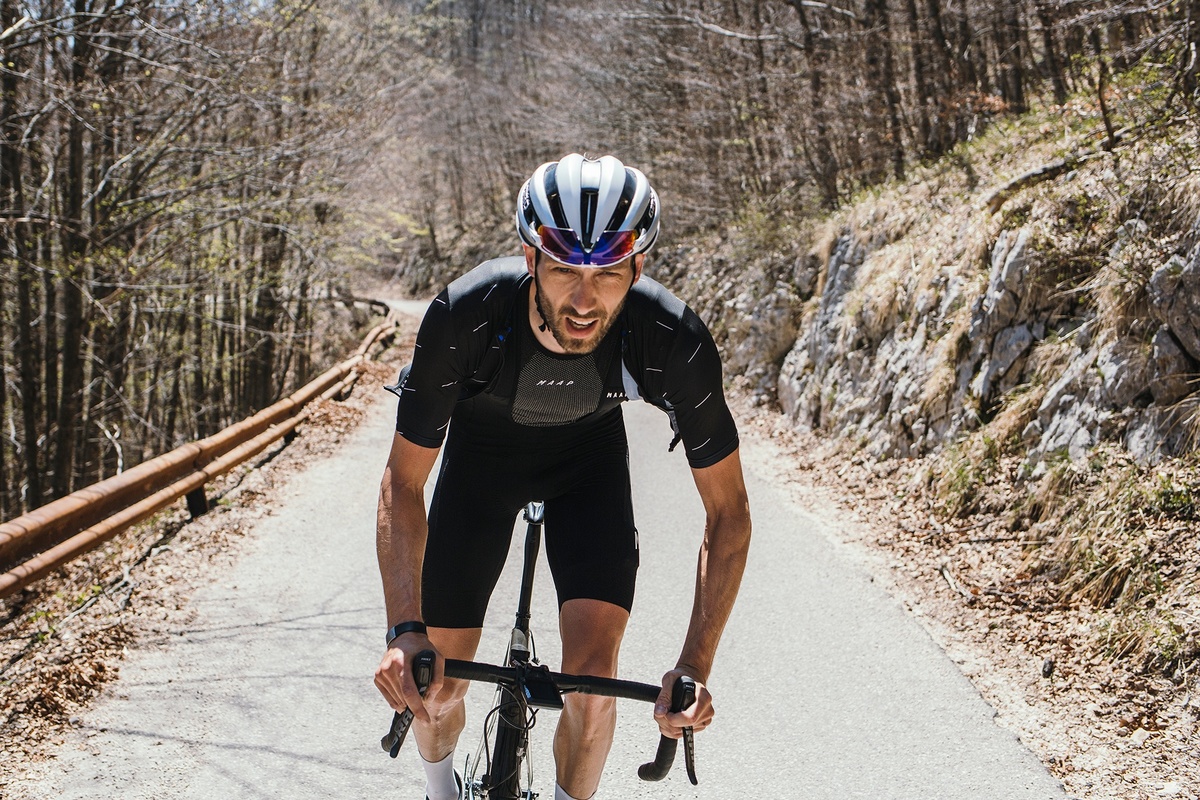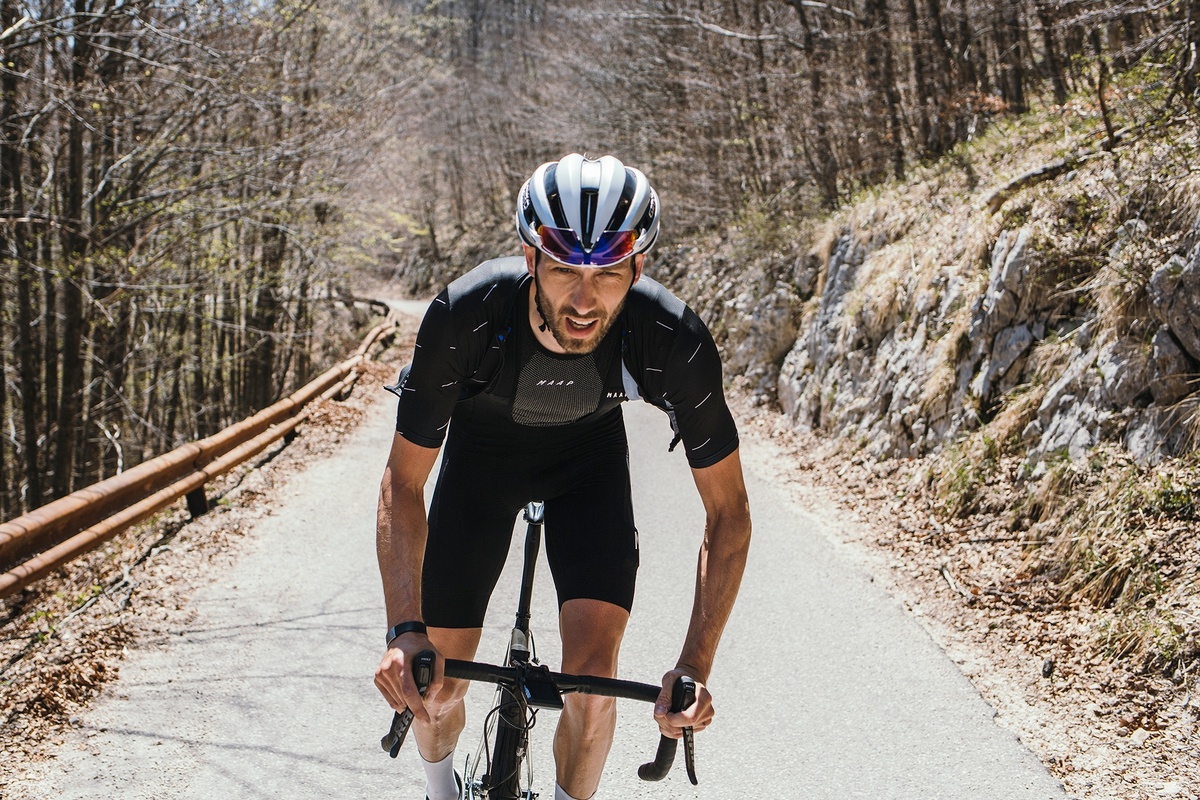
No matter your focus as a cyclist, odds are you’ll inevitably encounter some big climbing days in the saddle. Whether it’s a self-inflicted Sufferfest in the mountains or an event that touts massive amounts of elevation gain, you’re bound to have to go uphill. Since there’s no escaping it, what can you do to be ready to tackle the incline? Knowing what metrics to focus on to ensure you’re a capable climber and knowing what to expect in the mountains goes a long way in preparing your body and mind for your next uphill grind.
What Makes a “Big Climbing Day”?
The first question to answer is, “what constitutes a ‘hilly’ or climbing focused ride?”. Grasping the concept of elevation gain and the ratio of climbs to flat terrain will help you both physically and mentally prepare for a day in the mountains. The generally agreed upon ratio used to describe a route with a substantial amount of climbing is 100 feet per mile or 1,000 feet for every 10 miles. This “golden ratio” means that the overall elevation gain matches these parameters. It doesn’t mean that you continually climb to reach these numbers, but that cumulatively the route gains elevation versus losing it. If you’re training for a big mountain event or wondering if your favorite climbing route is up to par, then this ratio can be a good place to start. If your focus is on becoming a better climber then trying to match this rule of thumb can be a good starting place, or “yardstick” to measure yourself against. Becoming comfortable with longer and longer rides that match these criteria will help you feel confident that you’re prepared to tackle the mountains. Whether it’s 3,000 feet in 30 miles or 10,000 feet in 100 miles, know what it means when you’re reviewing your training rides or your next bucket list race.
Key Metrics for Climbing
Now that you understand what constitutes a “climbing route”, you next need to grasp what metrics to focus on so that you know if your training is helping you prepare for a day in the mountains. VAM (Velocità Ascensionale Media) is the measure of both fitness and speed and tells us how quickly a rider is able to pedal uphill. VAM is a great metric to use as a baseline for your favorite climb. As you get stronger you should expect to see VAM increase. If you’re training for a big day of climbing, with several long sustained climbs greater than 20 minutes, then a target VAM of 1,000 meters/hour is a good goal to try and reach for.
Power to weight ratio (PWR) or watts per kilogram (W/Kg) is a critical metric to track as soon as the terrain shifts from flat to uphill. On flat terrain, critical power is the most important component to a rider’s success. However, once things begin to shift upward and gravity takes control, PWR is what makes for a successful climber. Unlike critical power, which is a static number, W/Kg is duration based. Calculate your PWR for durations that match the demands of your route or event. If there are long sustained climbs, calculate W/Kg for 20, 30, and 60 minutes to see where you’re at. A PWR of 4-5 W/Kg is a great target to aim for. This will put you in a position to be strong climb after climb and produce steady power as you climb skyward.
Setting up your dashboard, or what’s visible on your cycling computer, will enable you to receive real-time metrics and key information to inform your pacing, effort, and expectations for the day. Everyone has their favorite metrics during a ride, but there are a few that are specific to climbing that should be included. Normalized power (NP) becomes important anytime the riding isn’t flat. Average power is a good indication of the actual effort if the route remains consistent, but NP factors in the physiological “cost” of different efforts throughout a ride. Big efforts uphill, and then coasting downhill is much different than a flat steady-state ride, thus the importance of Normalized Power. Elevation gain and distance is also good to have. This lets you quickly calculate your ride stats to see where you are in relation to the “golden ratio”. Five-second average power can also be valuable on long, sustained climbs. Knowing what percentage of your FTP you can sustain for different durations, and then using average power as a gage for proper pacing on long climbs will ensure you don’t blow up mid-climb.
While climbing may not be what every cyclist looks forward to, it is something that most will have to conquer at some point. Understanding what it is you’re getting yourself into and whether your training routes are able to properly prepare you for the events on your race calendar is the first step. Next, you’ll need to focus on the most impactful metrics in order to track your climbing specific fitness, as well as set your computer up to give you the information most useful to you when climbing. Once you’ve taken the necessary steps and understand the nuances of climbing all that’s left to do is to start pedaling uphill and get over the mountain!
Taylor Thomas is the founder and head coach of Thomas Endurance Coaching (TEC) and has more than a decade of experience in the endurance sports industry as an athlete, coach, race promoter, and team organizer. TEC provides expert level coaching to athletes of all ability levels and specializes in both a scientific and metrics-based approach to endurance sports. They guide athletes in all disciplines of both running and cycling. Browse their pre-built training plans on TrainingPeaks, or for more information on personal coaching and custom training plans visit www.thomasendurancecoaching.com. Follow TEC at @endurance_coach.


